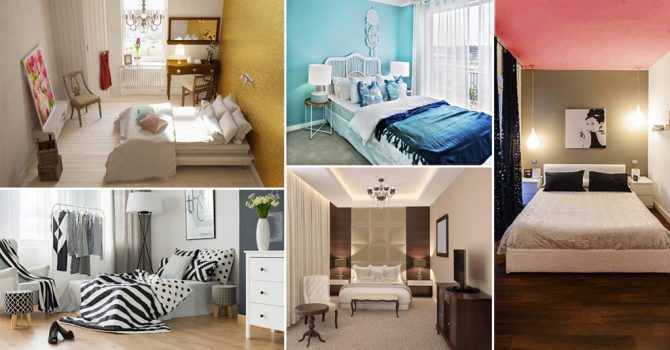Furniture is more than just functional pieces that fill a room; it’s the foundation of a comfortable and stylish home. It sets the tone for your living space, reflects your personality, and provides a haven for relaxation and connection. But navigating the vast world of home furniture can be overwhelming. From sofas to sectionals, dining tables to dressers, the options seem endless. This guide aims to simplify the furniture selection process, empowering you to create a home that’s both beautiful and functional.
Step 1: Assessing Your Needs and Space
Before diving headfirst into furniture shopping, take a step back and assess your needs and space. Here are some key considerations:
- Lifestyle: How do you use your living space? Do you entertain often? Do you have young children or pets who require durable furniture?
- Room Functionality: Consider the specific purpose of each room. For a living room, prioritize comfortable seating and a coffee table for gatherings. In a bedroom, focus on a restful night’s sleep with a comfortable bed and nightstands.
- Space Dimensions: Measure your rooms meticulously! Sketch a basic floor plan to visualize furniture placement and ensure everything fits comfortably. Remember to account for walkways and door clearance.
Step 2: Prioritizing Comfort and Function
Although aesthetics are important, comfort and usefulness ought to come first. Here are some tips for each furniture category:
- Sofas and Sectionals: These anchor pieces should be comfortable for lounging and offer ample seating for your needs. Consider the size, shape, and style that best complements your living space. Invest in good quality cushions and upholstery for long-lasting comfort.
- Dining Tables and Chairs: Choose a dining table that accommodates your usual dining needs and can expand for occasional gatherings. Ensure chairs offer proper back and leg support, especially if you spend extended periods at the table.
- Beds: Your bed is your sanctuary! Invest in a comfortable high quality mattress that provides proper back support and caters to your sleeping style. Choose the right size based on your space and needs. Consider a platform bed with built-in storage for a space-saving solution.
- Storage Solutions: Clutter can overwhelm a space. Invest in functional storage solutions like dressers, bookshelves, and cabinets to keep your belongings organized and out of sight.

Step 3: Exploring Material Options: Finding the Perfect Balance
There are many different materials used to make furniture, and each has pros and cons of its own. Here’s a quick breakdown:
- Wood: A timeless classic, wood furniture offers warmth, beauty, and durability. Choose solid wood for heirloom-quality pieces, or opt for wood veneers for a more budget-friendly option.
- Upholstery: Upholstered furniture provides comfort and style. Fabric options range from luxurious leather to easy-to-clean performance fabrics. Consider your lifestyle and needs when selecting upholstery materials.
- Metal: Metal furniture adds a touch of industrial chic and can be very durable. Wrought iron and stainless steel are popular options.
- Rattan and Wicker: Natural fibres like rattan and wicker add a touch of coastal or bohemian flair. They are lightweight and often well-suited for outdoor spaces.
Step 4: Embracing Your Style: Choosing the Perfect Design
The exciting part is about to begin: adding your individuality! Here are some popular furniture styles to consider:
- Modern: Clean lines, sleek silhouettes, and neutral colours define modern furniture. Look for pieces with minimal ornamentation and functionality at the forefront.
- Mid-Century Modern: This iconic style features warm woods, tapered legs, and pops of colour. Think Mad Men meets modern living.
- Scandinavian: Minimalism meets functionality in Scandinavian furniture. Natural materials like wood and light fabrics create a sense of calm and simplicity.
- Traditional: Traditional furniture features classic designs with intricate details and rich fabrics. This look exudes an air of classic elegance.
- Industrial Chic: Raw materials like exposed metal and reclaimed wood define industrial chic furniture. This style creates a cool, urban vibe.

Step 5: Shopping Savvy: Where and How to Buy Furniture
With a clear vision in mind, it’s time to shop! Here are some valuable tips:
- Set a Budget: Before you go shopping, decide on your spending limit. This will help you narrow down your options and avoid impulse purchases.
- Shop Around: Compare prices and features before making a decision. Explore furniture stores and online retailers, and even consider second-hand shops or vintage stores for unique finds.
- Invest in Quality Pieces: Focus on quality over quantity. Investing in well-made, timeless pieces will last longer and provide more value in the long run.
- Consider Customization: Many furniture stores offer customization options like choosing fabric colours or leg styles for certain pieces. This allows you to personalize your furniture and create a truly unique look.
- Remember Comfort: Always sit on sofas and chairs and test mattresses before buying. Comfort is paramount, so ensure the furniture feels good and provides the support you need.
- Read Reviews: Internet reviews are sometimes a very useful tool. Read customer reviews to get an idea of the quality, comfort level, and durability of furniture before making a purchase.
Step 6: Creating a Cohesive Look: Putting it All Together
Once you’ve selected your furniture pieces, it’s time to arrange them for optimal functionality and visual appeal. Here are some tips:
- Balance and Scale: Create a sense of balance by arranging furniture pieces in proportion to the room size. Avoid overwhelming a small space with oversized furniture.
- Traffic Flow: Ensure there’s ample space to move around the room comfortably. Leave designated walkways and avoid furniture placement that creates bottlenecks.
- Focal Points: Create focal points in each room. This could be a fireplace, a TV, or a stunning piece of artwork. Arrange furniture around the focal point to create a sense of purpose and visual interest.
- Accessorize Wisely: Elevate your furniture with stylish accessories like throw pillows, area rugs, and lamps. Use accessories to tie the look together and add pops of colour or personality.
Building Your Dream Home: A Journey, Not a Destination
Remember, furnishing your home is a journey, not a destination. It’s an ongoing process of collecting pieces you love, and that reflect your evolving style. Take your time, prioritize comfort and functionality, and don’t be afraid to experiment. With a little planning and these helpful tips, you can create a home that’s not just aesthetically pleasing but a haven of comfort, relaxation, and personal expression. Happy furnishing!

